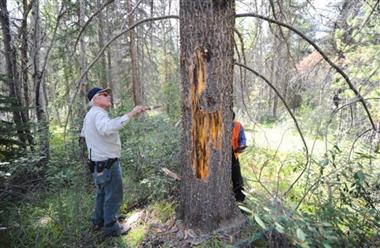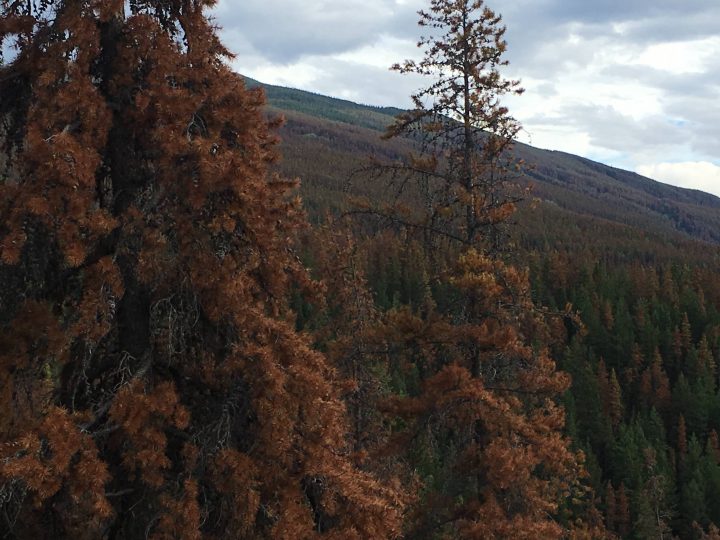Many residents in Alberta may be groaning about the cold snap that’s been gripping the province in recent weeks, but those involved in the fight against the devastating mountain pine beetle are breathing a sigh of relief.

According to a researcher at the University of Alberta, the frigid temperatures the province has been experiencing — particularly in the region where the outbreak is at its worst: within and surrounding Jasper National Park — is helping to kill off the pest that has ravaged forests.
“We see some good news in that some of the coldest temperatures have been experienced in parts of Alberta where the outbreak has been of concern,” said Janice Cooke, associate professor in the University of Alberta’s faculty of biological sciences.
While Alberta has been experiencing the outbreak since about 2006, Cooke said the situation has worsened significantly in the Jasper National Park area within the last three to four years.
Since the outbreak started in B.C. in 1999, more than 19 million hectares of forest have been destroyed by the beetle across both B.C. and Alberta — that equates to about the size of all three Maritime provinces, or half the landmass of Sweden, Cooke said.
This isn’t the first winter Alberta has experienced long stretches of cold weather — last year saw the province battle cold and snow, too — but beetle larvae are equipped to handle the cold to a certain extent, tucked under pine tree bark.
“They manufacture these compounds that effectively act as antifreeze,” Cooke said. “As the autumn progresses, they receive cues to make the antifreeze compounds. The bigger they are and the amounts and types of antifreeze compounds they have allow them to survive better.”
Cooke said the plummeting temperatures work like a dimmer switch; every time the temperature drops, a few more die.
“The colder it goes the more of the beetles you’re going to kill,” she said.
“We are seeing mortality as high as 90 per cent of larvae killed [this year].”
Cooke said the population decline will do a lot to help the provincial government with its control tactics, but said “lots minus lots is still lots” when it comes to the troublesome beetles.
“It certainly reduces the chance of the outbreak exploding even faster,” she said. “It gives the province a lot more breathing room to enact their control and their control can be effective.”
WATCH (aired January 2017): Many hoped the chilly temperatures would help rid B.C. of the pesky beetles that plague forests or destroy lawns. As Linda Aylesworth reports, they are hardier than you would think.

The province has been handling the outbreak on its land by doing aerial surveys of forested areas, identifying affected trees on digital maps and sending crews to find that tree, confirm it’s been attacked, fall the tree and immediately burn it. The crews will then inspect other trees in the surrounding area to see if they’ve been affected and carry out the same practice.
When it comes to the outbreak within Jasper National Park though, Cooke said that falls under the federal government’s jurisdiction and the response hasn’t been as effective.
She said the severity of the outbreak within the park boundary means officials can’t take the same control measures since there are simply too many beetles. She said Parks Canada is taking a “post-mountain pine beetle” approach to its growing number of red, dead trees.
“It is the result of not having taken action when the outbreak was really, really small,” she said.

Cooke said the area around Hinton, as well as south and east that town, are of great concern as those forests are essential to Alberta’s forestry industry and are environmentally and ecologically important because of the watersheds in the area.
She added that the spread of the mountain pine beetle into Alberta’s forests, which represent the bridge to the rest of Canada, has led to instances of the beetles being found in forests farther to the east as well as spreading north to the Northwest Territories.
Cooke said researchers are also looking into whether the mountain pine beetle is becoming more tolerant to the cold as they are found in colder, northern climates.



Comments